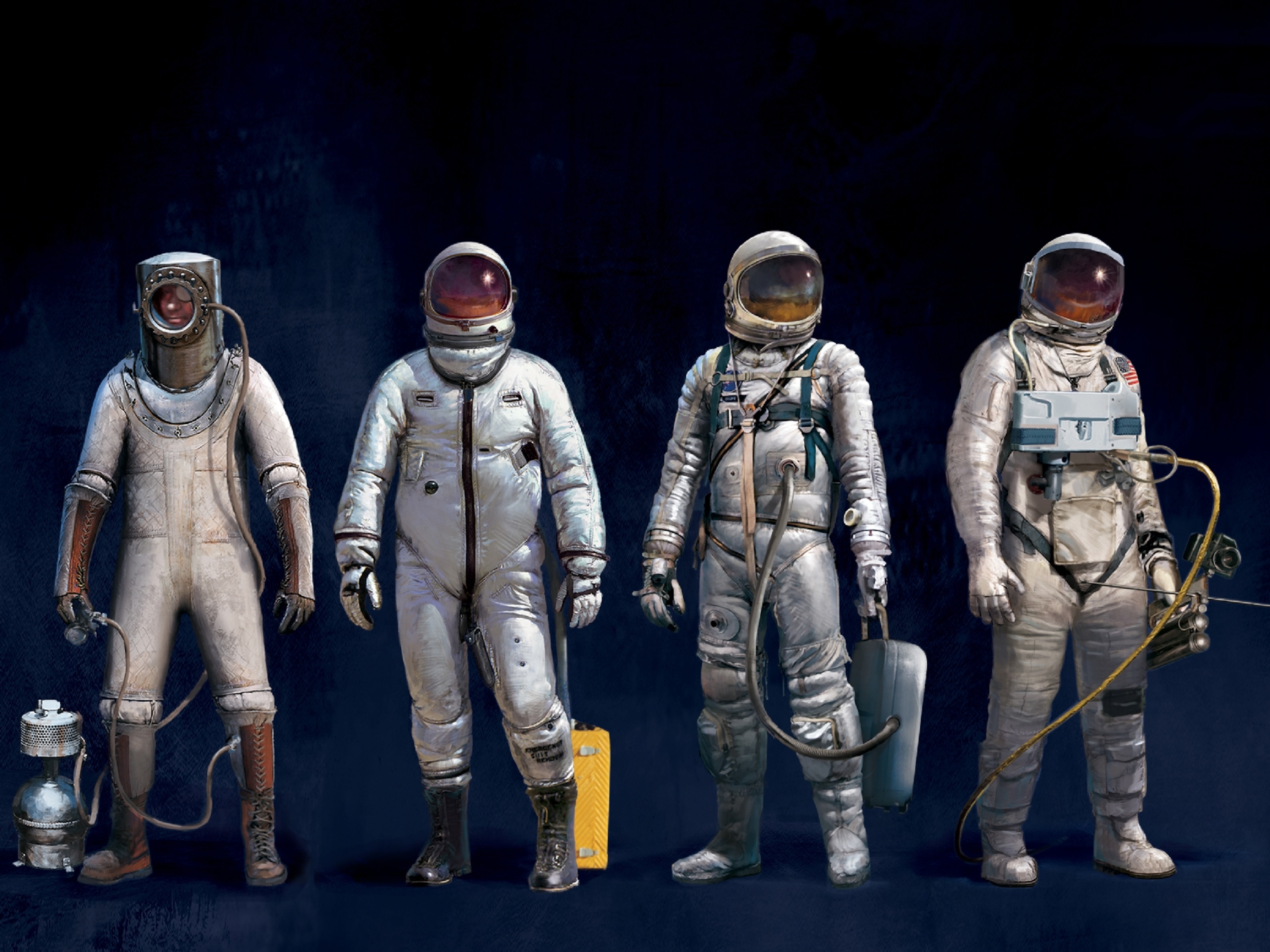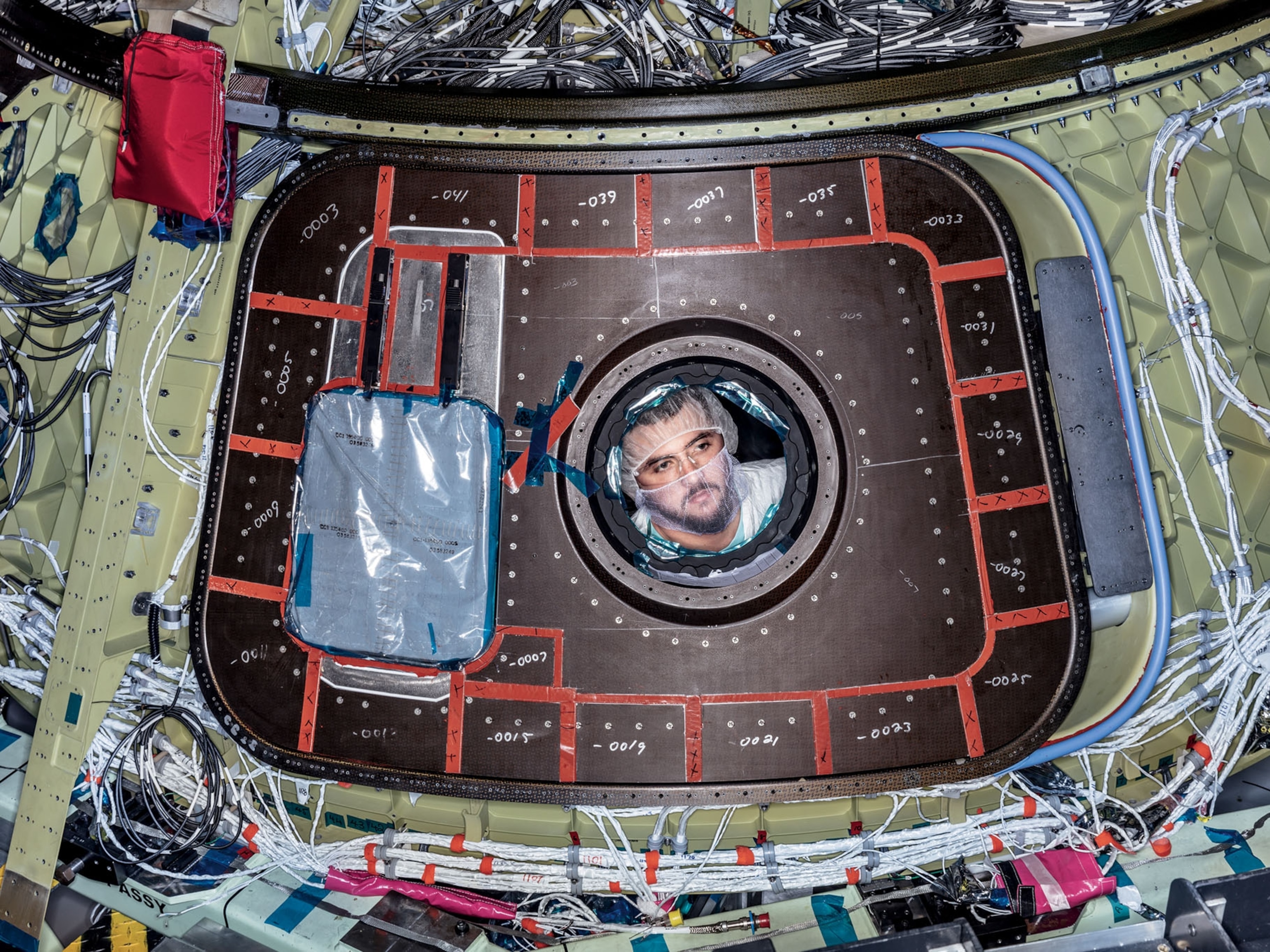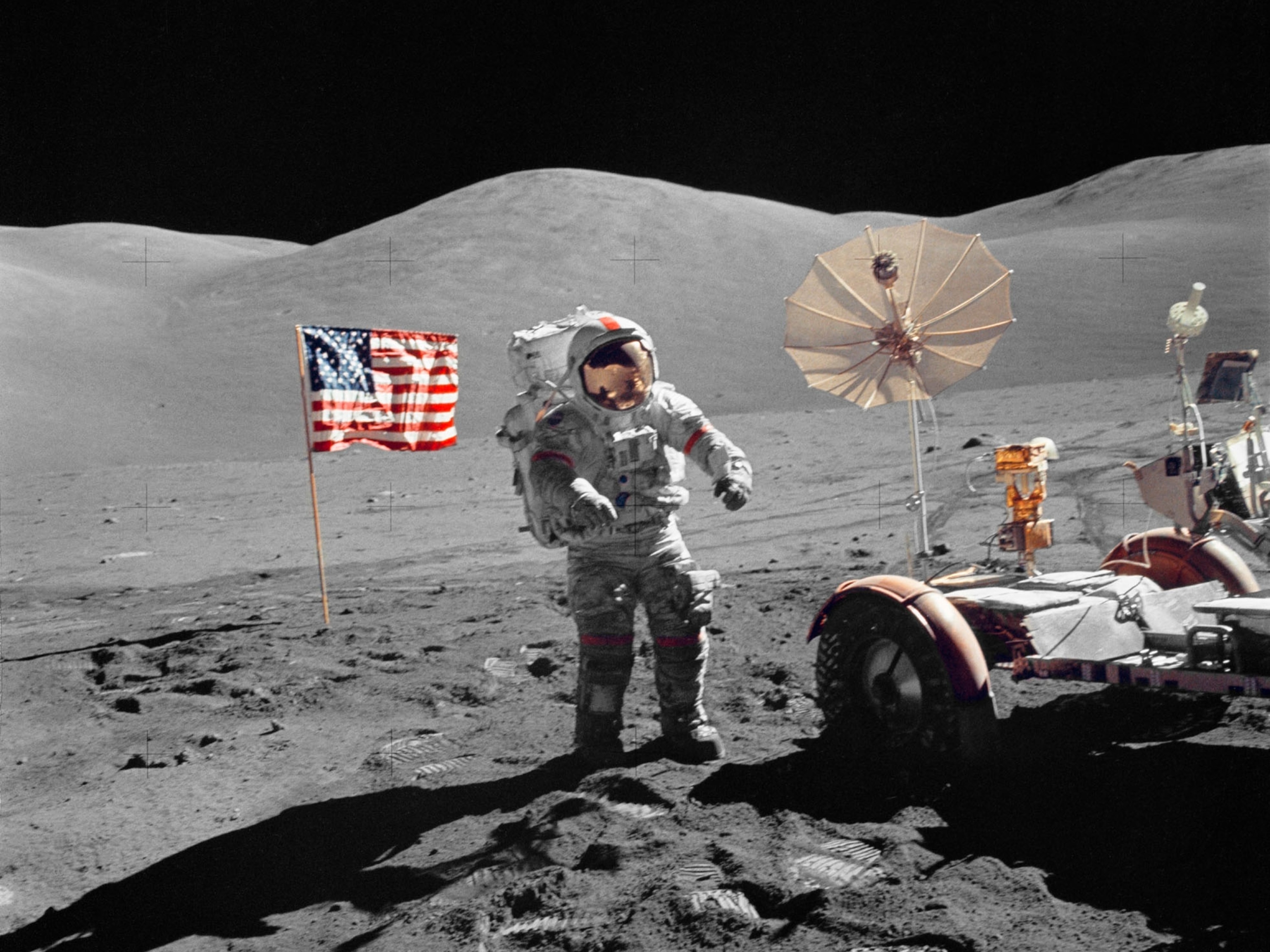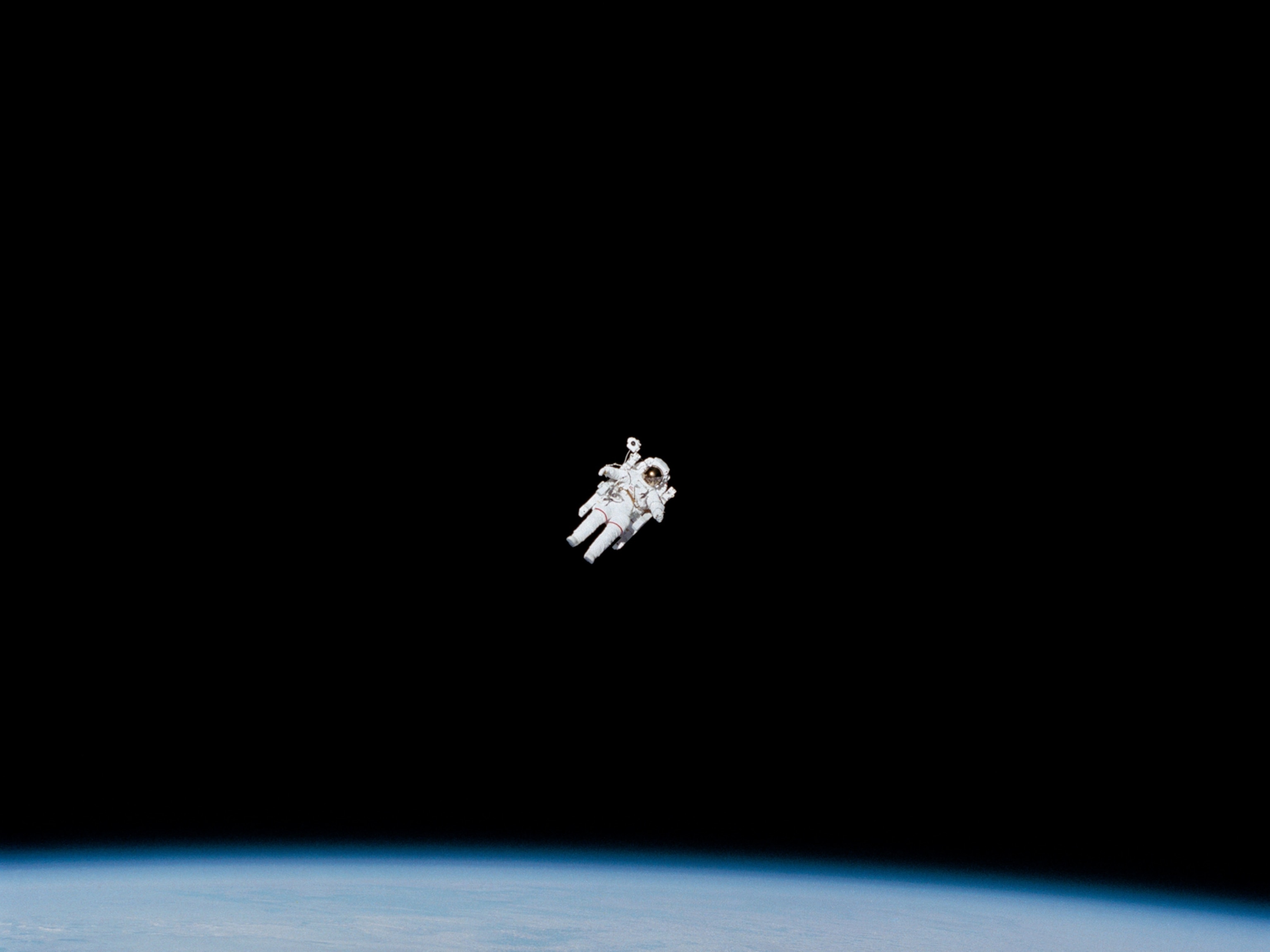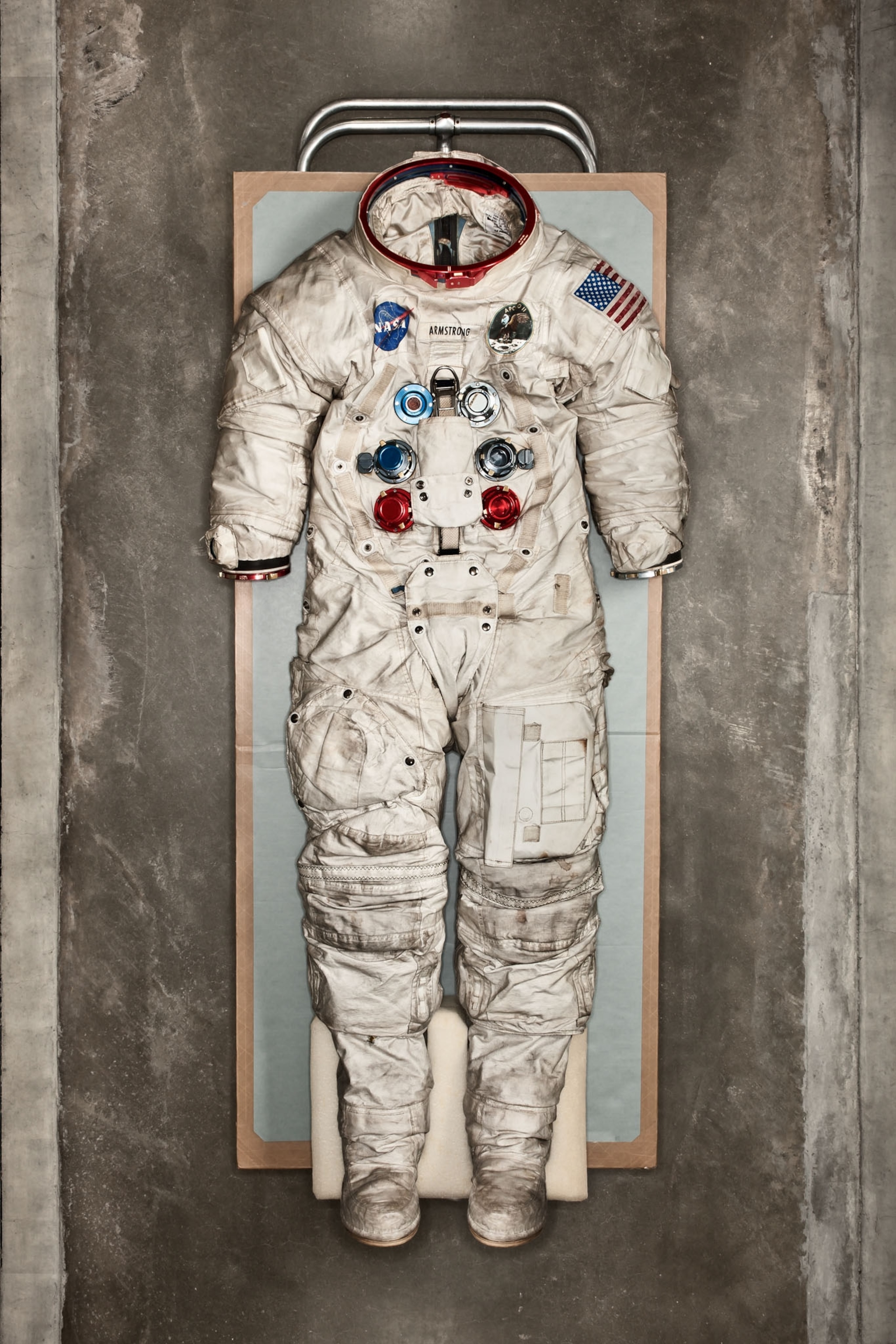
How Space Suits Are Evolving for Missions Beyond the Moon
Early astronauts donned jet-pilot-style uniforms. Soon they'll wear Tron-inspired gear.
On Earth, clothes make the man—and woman. In space, they’re the key to survival. Whether helping astronauts enter Earth orbit, walk on the moon, pilot a space shuttle, or travel to Mars, space suits must serve several vital functions: provide oxygen, control temperature, permit movement, power communications, and protect against solar radiation.

But fashion is fickle, and technology grows apace. Space historian Roger Launius says the first suits were based on what jet pilots wore. Over time they’ve evolved into autonomous modules that help astronauts negotiate the inky expanse, gather samples, and work on the International Space Station.
Yet in some ways they’ve hardly changed. Now as then, a space suit is essentially a gas-filled, human-shaped covering. (Exceptions include the form-fitting suits Dava Newman is developing at MIT and the high-mobility models Pablo de León is designing at the University of North Dakota.)
Launius says a hard-shell suit is optimal but impractical. “So you’ve always had suits that can be pressurized, unpressurized, and folded up. The downside is that, when inflated, they look like the Stay Puft Marshmallow Man.”
The next step: a suit that’s easy to get into and out of. “We also need one for both zero gravity and a surface with some gravity, like Mars,” says Launius. He concedes that those goals may be mutually exclusive. But why not shoot for the moon?
A Suit for all Missions
Mercury/Gemini: The first space suits were modified U.S. Navy jet-aircraft pressure suits. Neoprene-coated nylon lined the inside; aluminized nylon covered the exterior.
Apollo: Custom-tailored for a single lunar mission, with boots made for moonwalking, Apollo-era suits were the first equipped with a life-support system.
EMU: The Extravehicular Mobility Unit has been NASA’s workhorse suit for some 30 years, allowing astronauts to function in Earth orbit and build the ISS.
Z-1, Z-2: These prototypes are being tested for use on the moon, asteroids, and Mars. They need to be lighter, more flexible, and more durable than previous suits.
